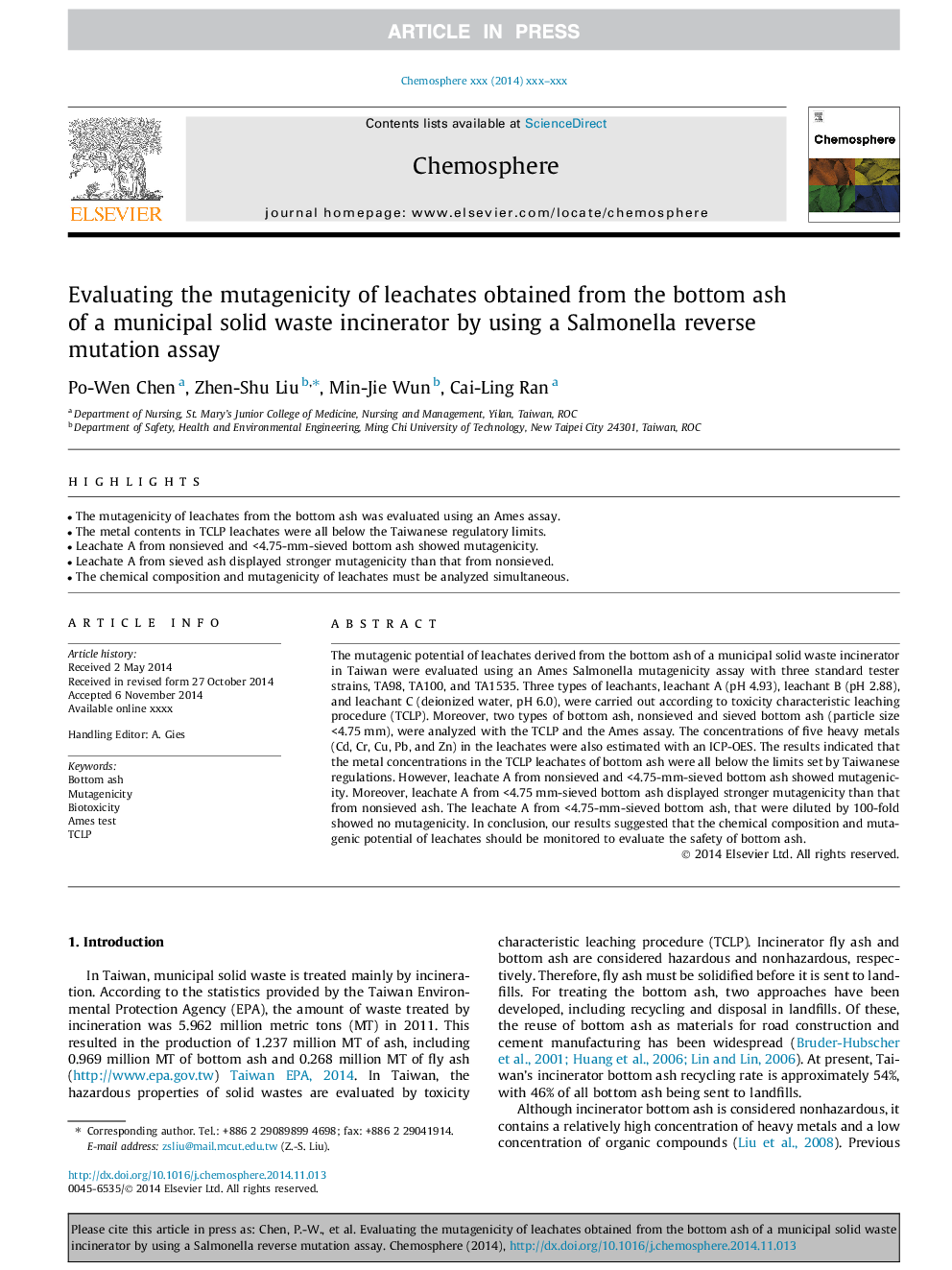| Article ID | Journal | Published Year | Pages | File Type |
|---|---|---|---|---|
| 6308064 | Chemosphere | 2015 | 7 Pages |
Abstract
The mutagenic potential of leachates derived from the bottom ash of a municipal solid waste incinerator in Taiwan were evaluated using an Ames Salmonella mutagenicity assay with three standard tester strains, TA98, TA100, and TA1535. Three types of leachants, leachant A (pH 4.93), leachant B (pH 2.88), and leachant C (deionized water, pH 6.0), were carried out according to toxicity characteristic leaching procedure (TCLP). Moreover, two types of bottom ash, nonsieved and sieved bottom ash (particle size <4.75Â mm), were analyzed with the TCLP and the Ames assay. The concentrations of five heavy metals (Cd, Cr, Cu, Pb, and Zn) in the leachates were also estimated with an ICP-OES. The results indicated that the metal concentrations in the TCLP leachates of bottom ash were all below the limits set by Taiwanese regulations. However, leachate A from nonsieved and <4.75-mm-sieved bottom ash showed mutagenicity. Moreover, leachate A from <4.75Â mm-sieved bottom ash displayed stronger mutagenicity than that from nonsieved ash. The leachate A from <4.75-mm-sieved bottom ash, that were diluted by 100-fold showed no mutagenicity. In conclusion, our results suggested that the chemical composition and mutagenic potential of leachates should be monitored to evaluate the safety of bottom ash.
Related Topics
Life Sciences
Environmental Science
Environmental Chemistry
Authors
Po-Wen Chen, Zhen-Shu Liu, Min-Jie Wun, Cai-Ling Ran,
